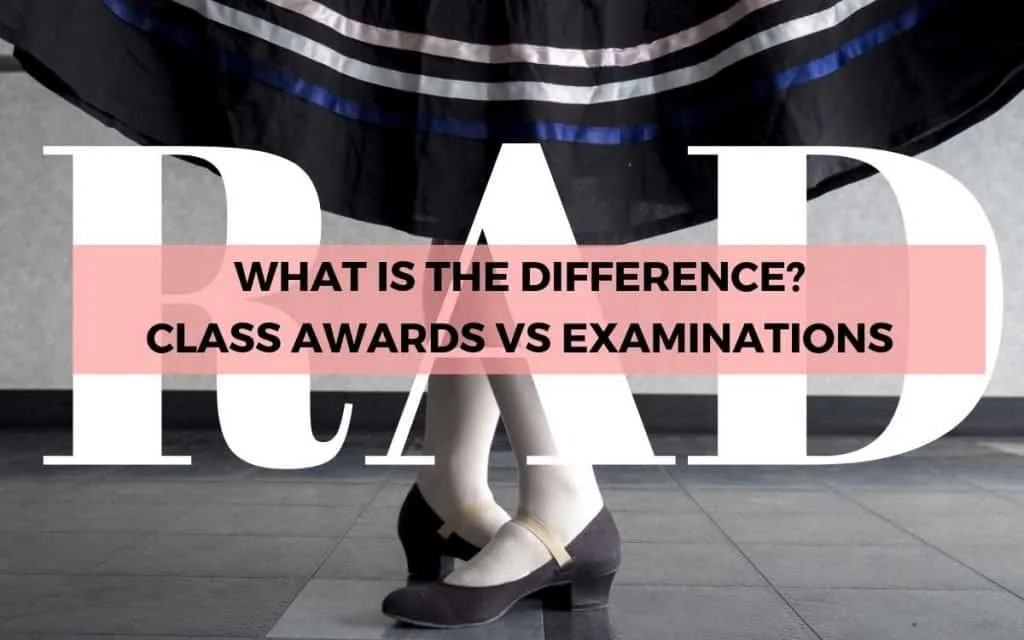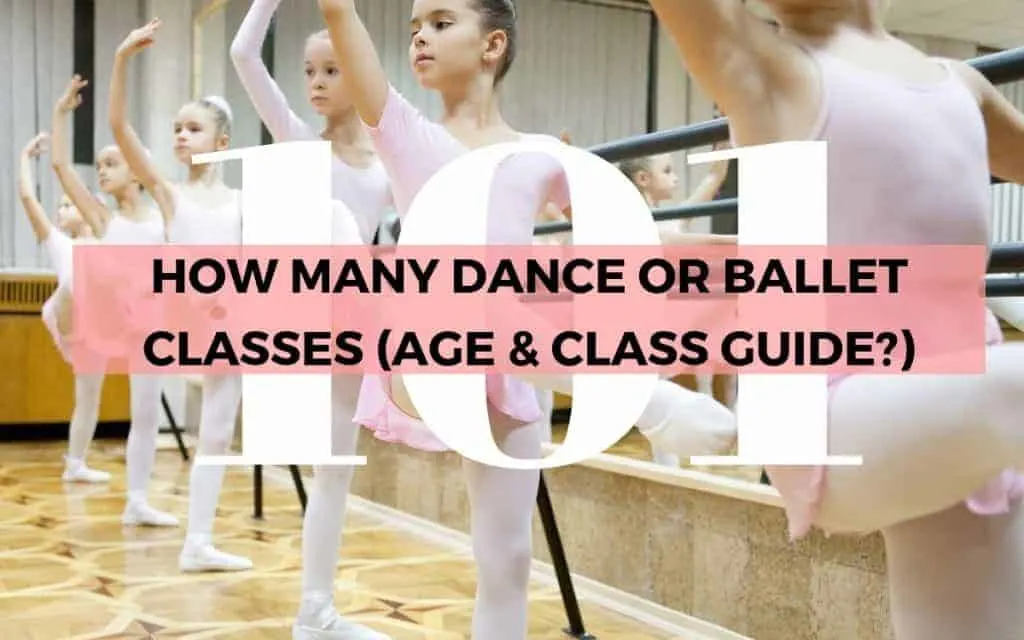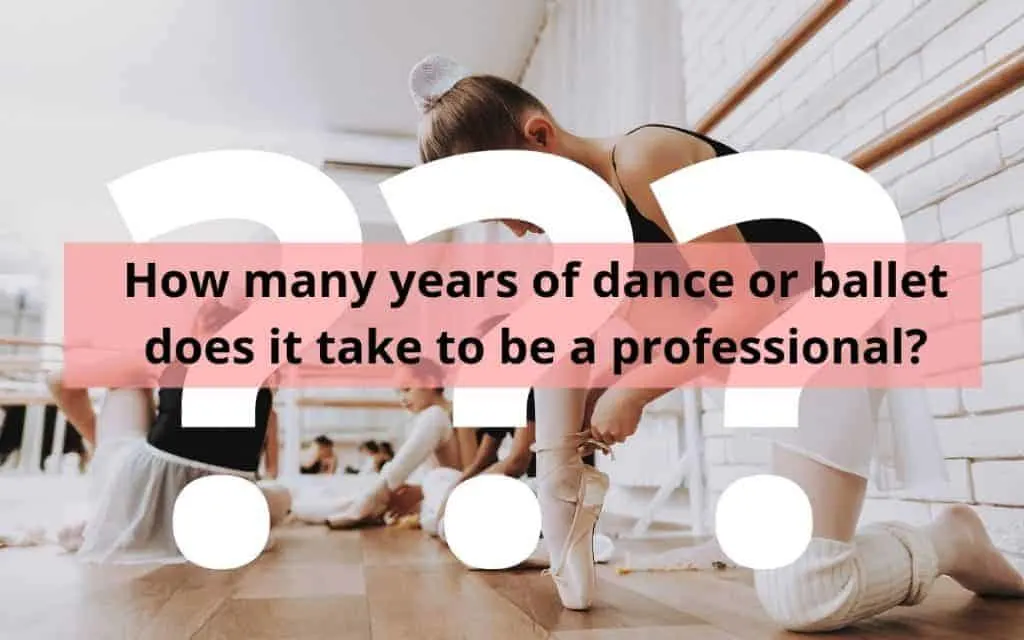
Since writing the article RAD Ballet Class Awards Vs Exams: A Helpful Guide For Parents I have had some requests from parents to write about the RAD Presentation Class as they had similar concerns about the difference between the RAD Presentations and Exams. I hope the following article is helpful too!
The RAD Presentation Classes for grades six to eight are a supported form of the examination material performed for the examiner but are not assessed by the examiner. In RAD Exams students perform exercises and routines for an external examiner under test conditions which they can pass or fail.
How are RAD Presentation Classes different to the Exams?
For the Grade Six and Seven Presentation Classes, students perform exam material with the teacher or their assistant in the exam room, not correcting or teaching, but guiding students through the exercises. Students perform the exact same exercises that are presented in the exam, but depending on time constraints some might be excluded and your teacher can choose which ones to present as long as they cover exercises from the three sections of the exam. Dances are presented in groups of two or three is numbers necessitate this.
If the Grade Six or Seven Presentation Class takes place in what the RAD calls an AECs which is an approved venue for the examination provided by the applicant or the applicant’s school or studio, an audience can be present -if there is enough room for one. The RAD has a long list of requirements for AECs and rules for audience members such as no admittance of children under 12, this can all be found in the RAD exam specifications documentation on their website.
The presentation class for Grade Eight is conducted differently. No audience is allowed and the examiner rather than the teacher guides the students through the performance of the exam material. All exercises are performed just as they would be in the exam.
How are Presentation Classes Assessed?
Presentation classes are not assessed by the examiner. The student’s teacher has access to a RAD approved Record of Attainment which they can fill in to indicate students’ progress. This progress report is not compulsory for teachers to fill in, so if your child has never received one, this is why. Each student in the Presentation Class receives a certificate of participation. These can be handed out by the examiner at the end of the Presentation Class or your school might have a separate occasion for certificates and awards to be given and so your teacher might give the certificate to your child then instead.
Why do the presentation class in front of the examiner if the examiner is not going to assess the students?
Although not being assessed by the examiner, especially when you are paying a fee to do the presentation, to some people might seem a little ridiculous or pointless. But there are several valid reasons why the RAD might have put this process in place:
- Some teachers use the presentations as practice and students will be assessed in full when they do the exam in the future.
- It gives students a goal to work towards, successfully presenting the work to their best ability to someone who is highly regarded and knowledgable.
- Not being assessed takes the stress off the students as there is no possibility of failure.
- It allows students who are not on a professional trajectory the opportunity to still take part in the RAD examination process without having to do as many classes.
- It allows students taking 1 or 2 classes a week to participate in the RAD examination process in a supported way.
- For Grade eight presentations the examiner cannot simultaneously take the class and examine the students.
- Even though they are not being assessed students are still showcasing their school, their hard work and their teacher’s training of them to the examiner, who is being given a chance to quality check the teaching at their school.
Why is my child doing the Presentation Class and not the Exam?
Your teacher will not enter your child for the exam if they do not believe they will pass and this might be for several reasons. The first being that The Royal Academy of Dance has created a table in their exam specifications document that estimates how many hours students should have trained for before attempting the exam which includes guided hours and other preparation and study. For the Grade 6-8 exams, they recommend students receive 90 hours of guided training and have another 40 hours of other preparation, study and assessment time as directed by a teacher. Out of 52 weeks if your child spends 40-42 weeks doing lessons this would mean attending 2-3 lessons a week to be ready for the exams. This does not take into consideration Recital practices, pre-pointe and then pointe work lessons, other styles they might be taking or other incidental lessons.
For some schools offering this many classes is not feasible, especially if your teacher offers lessons in many disciplines such as tap and jazz, therefore your studio might only work towards presentation classes rather than exams. Alternatively, you might have never seen the benefit of letting your child do so many lessons, or have felt doing so much is too much too soon and therefore your child may not have reached the technical standards, have the strength, confidence or even the memory of the work required for the exams. If you are unsure of whether your child should be doing more lessons or not, have a read of the following articles, as they will give you some insight into what is generally considered a normal workload for someone studying ballet.
But what if your child is doing all the lessons as set by your teacher to prepare for the exam, but you are being told your child is not ready for the examination? What signs might your teacher be picking up on that are indicating this to them?
- During class they forget steps or the format of the exam work being taught;
- They may not have developed their technique to the same degree as their classmates;
- Not having the same level of technique, strength or flexibility as their classmates can undermine your child’s confidence;
- Their bodies might be growing faster than their friends especially as many will be going through puberty around this time, making it harder for their brains to co-ordinate with their bodies;
- If they started ballet later than the other students in the class they might still be catching up;
- Your child is not practicing or stretching at home which is evident in their classwork;
- Your child although enrolled in the lessons may not be attending them dues to illness or clashes with other activities.
- Your child might enjoy the social aspect of the class a little more than they should talking and trying to catch up and having fun or even trying to keep up appearances and their lack of concentration and discipline shows up in their execution.
By doing the Presentation Class won’t my child miss out on UCAS Tariff Points?
If you intend to apply for university in the UK, the graded exam syllabus is on the Regulated Qualifications Framework or RQF and from level 3, which begins at the Grade 6 Exam you can actually earn UCAS tariff points which can be applied to relevant courses at university or higher education in the UK. The points are awarded dependent on the exam result and not all countries participate in the RQF or similar frameworks recognized in the UK, this page on the RAD website has more information.
The point of this being, that if you had intended to use these points to boost your child’s UCAS tariff to get into University in the UK you will not get points by doing the Presentation Classes. If this is important to you or your child, you need to speak with your teacher about the issue, but it is important to remember that there is no age limit to being able to do the exams, only a minimum age which is 11 for the Grade 6-8 exams. Therefore if your child is not at a competent level to be doing them this time around, you can work with your teacher to get to a passable and above level for the next round of examinations being held and use the Presentation Class as a valuable training and learning experience in preparation for the exam.
My Child is Doing the Presentation Class But Most of Her Friends are Doing the Exam. Will They be Left Behind?
The great thing about RAD Graded examinations (only) is that other than meeting the minimum age there are no prerequisites to be able to register for the graded examinations. If you are not worried about UCAS tariff points then this means that if your child does the Presentation Class for Grade 6 for example and wants to continue with their friends, they can still try for the Grade 7 exam in the future without having completed the Grade 6 exam, but this is something you should discuss with your teacher, as the work progressively becomes more difficult and your child may not be ready for the next exam with their friends again.
Some schools do group their students according to ability rather than age and therefore regardless of whether your child is doing the presentation class or exam if they are not ready to move to the next level they might be in a different class to their friends anyway.
Is our teacher holding my child back to make themselves look good as they seem to only let students do exams who end up with Merit or Distinction outcomes?
Generally, no. The reason is not to make themselves look good or as if they have a top studio. Some teachers are more cautious than others about the standard they are willing to put forward for the exams. This is usually because they have learned from experience and really do not want you or your child to be disappointed at the end of the day if your child fails. I mean who are you going to point fingers at – your teacher of course!
Nicolle Higgins is the owner and RAD registered teacher at Pointe Works a Ballet school focused on exam work in the UK. The following excerpt is from a page on her website titled Royal Academy of Dance Examinations:
Royal Academy exams are really tricky to pass. There is a syllabus, a recommended number of face to face tuition hours and home practice hours for each grade. It’s very unwise to try and pass an RAD exam without hitting these recommendations.
I don’t mind if students don’t take exams. My school is structured by academic years rather than ability, so if a child doesn’t take the exam they don’t get left behind. I also offer a very inclusive approach to exams and use the Academy’s range of exam options to suit most children. I’m not precious about my school’s statistics, I am far more concerned about offering as many children as possible the opportunity to take an exam. Having said this, I refuse to put children into exams who have not had the training required, because either they, or their parents want me too. It’s not in their interests to be entered into an exam situation unprepared. It damages their self esteem and confidence. Year after year, I am faced with parents who ignore my advice and blindly subject their children to this situation. I don’t really know where this comes from, ‘keeping up with the Jones’s’ syndrome perhaps? They seem to be fighting for their child’s right to be included in the exam process regardless of whether this is the correct decision for their child. It is quite possible to fail an RAD exam. I have only ever had one fail in 10 years and I will never forgive myself for putting that person in for their exam. It was a mature student who I felt unable to say ‘no’ to. I didn’t want to hurt her feelings but because I didn’t do the right thing, her self esteem was crushed and she never came back to ballet again. I was newly qualified, inexperienced and it was a terrible decision, but lessons were learned.
How Should I Respond To Our Teacher With Our Concerns?
If you are worried about your child’s training in any way it is always best to talk to your teacher about your concerns. I outline the best way to approach your teacher in the article How to Effectively Sort Out Problems With Your Dance Teacher which will open in a new tab so you don’t lose this page and can read it later!
Once you have worked out your approach the three questions you could ask your teacher if you are concerned are:
1. Can you tell me exactly what things my child is doing that show you they are not ready for the examination?
2. What do you recommend we do in order for my child to be ready for examinations in the future?
3. Can you please complete the RAD approved Record of Attainment to indicate my childs’ progress.

Related Questions and Information.
Should I buy my child a gift for completing their Exam or Presentation Class?
Gary Chapman in his books about the Five Love Languages writes that gift-giving is a love language. Many parents today like to buy their child a gift to show them how proud they are of them. Alternatively, for some families, they prefer to offer words of affirmation or spend quality time with each other such as going out for a special meal. We have put together some carefully curated lists that include only three different gifts for various ages in our resource pages if you need some help choosing the perfect present.
More about the RAD Presentation Classes.
For Grades Six and Seven, up to 8 students can be in the room at the same time. For Grade Eight, the maximum number of students in the exam room at one time is 4. No student can be admitted to the class once it has commenced. The examiner can talk to the students during the presentation and can ask for exercises to be repeated if they feel it is necessary.
A teacher assistant who has been helping to prepare the students is allowed to guide the students in the presentation room instead of the teacher. The assistant does not need to be registered with the RAD, but the main teacher must be. Only one person is allowed in the room for grades six and seven – not both the teacher and assistant. The assistant or teacher is allowed to walk around the room as long as they do not block the view of the examiner. The teacher can help and remind students intermittently, but should not be demonstrating the movements or counting which can be distracting.





